Driver Awareness
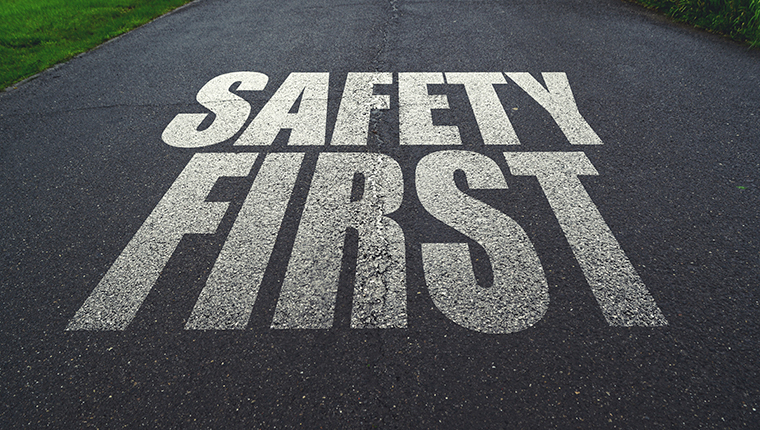
Apply for a New License in FL

What to take with you to the Driver License Office →
•4 Hour Course Once you complete a Traffic Law and Substance Abuse Education course through a registered provider your completion information is automatically submitted to our department and this information is available at all Driver License Offices! Paper certificates are no longer required at the driver licence office.
4 Hours Course online web link https://www.nationdrivingschool.com/lessons/online
•Proof of Identification bring your birth certificate or United States Passport. If you do not have your original birth certificate (a copy is not acceptable) then you may bring a certified copy of your birth certificate issued by the state you were born in.
•Proof of Social Security Number bring your original social security card or your W-2 showing your social security number.
•Two proofs of Residential Address such as your home utility bill, cable bill, home telephone bill, etc.
•Proof of Name Change if you have ever changed your name through marriage, divorce or court order.
•Parent/Guardian On-line Test Proctoring Form which must be signed in the presence of a driver license examiner or notarized if parent or guardian will not be present.
•Parental Consent Form – Minor Driver Applicant Form. If you are under 18 and are not married one parent or legal guardian must sign your license application. Step-parents may not sign unless they have legally adopted you.
Parental Consent Form Download Link: https://www.flhsmv.gov/pdf/forms/71142.pdf
Please print sign and notarized
•No additional certificates needed!
•Pass the DMV computer tests:
•Vision.
•Hearing.
•Knowledge.
•Driving.
Licensing Requirements for Teens &
Graduated Driver Licensing (GDL) Laws
Graduated Driver Licensing (GDL) laws — basically, laws for drivers who are minors — allow young drivers to safely gain driving experience under lower-risk conditions before obtaining full driving privileges. These laws outline limits and restrictions for new drivers ages 15, 16 and 17. Florida’s GDL laws are designed to help teens gradually — and safely — build their skills and experience behind the wheel. It is important for teens and their parents to understand these laws and obey them.
Requirements for Minors Getting Learner’s License →
•Must be at least 15 years old
•If under 18 years old, must have a signed/notarized Parental Consent Form (step-parents may not sign unless they have legally adopted the minor child)
•Proof of Traffic Law and Substance Abuse Education (TLSAE) course completion
•Have taken vision and hearing exams
•Passed Class E Knowledge Test
•Prepare for the exam by studying the Official Florida Driver License Handbook
•50 multiple-choice questions about traffic laws and traffic signs; 40 correct answers (80%) to pass
Requirements for Minors Getting Operator’s License →
•Must be at least 16 years old
•Hold Learner’s license for 12 months or age 18 (whichever comes first)
•Have driven at least 50 hours with Learner’s license (10 of which were at night)
•Provide signed Certification of Minor Driving Experience Form
•NO moving violation convictions for one year since learner’s date of issuance (OR may have one moving violation as long as adjudication was withheld)
•Pass Driving Skills Road Test
•The vehicle used for the driving test must have a current registration and be insured
Note: The minor must provide documents needed to establish proof of identity, proof of social security number and proof of residential address. Please visit GatherGoGet.com for a list of acceptable documents.
As we step into a new year, it’s a perfect time to reflect on our goals and resolutions. Many of us focus on self-improvement—whether that means getting in better shape, spending more time with family, or learning new skills—but what about improving our driving habits? Safer driving not only protects you but also helps safeguard your loved ones and everyone on the road. This year consider making a commitment to safer driving with resolutions that can have a lasting impact.
NHTSA encourages you to start the new year with a commitment to these 10 important safety goals:
Buckle Up. Every Trip, Every Time
Wearing your seat belt can save your life and reduce the risk of injuries if you’re in a crash. Always place the shoulder belt across the middle of your chest and away from your neck, and place the lap belt across your hips, not your stomach. You should never put the shoulder belt behind your back or under your arm. Misuse can have dangerous consequences. If you have passengers, make sure everyone is properly buckled before hitting the road. Remember: Buckle Up. Every Trip. Every Time.
Ensure Children Are in the Right Seat
It’s important to choose the right seat, install it correctly, use it every time your child is in the car, and know when it’s safe to transition to another type of car seat or seat belt. NHTSA can help you through the process with car seat recommendations based on your child’s age and size, detailed car seat installation instructions, and finding a car seat inspection station to have a certified technician check your work. NHTSA also offers seat belt safety tips for tweens. Remember that the back seat is the safest place for children under 13.
Drive Sober
Driving while impaired is a dangerous, deadly crime. In every state, it’s illegal to drive impaired by any substance—alcohol or other drugs, whether legal or illegal. Being a responsible driver is simple: if you’re impaired, do not drive. Instead, plan ahead and arrange a safe ride home before the event. You can schedule a rideshare or taxi, call a sober friend, or use public transportation to get home safely. If you’re hosting an event where alcohol will be served, make sure all guests leave with a sober driver and don’t hesitate to stop someone from getting behind the wheel after drinking.
Pay Attention to the Road
Distracted driving includes talking or texting on your phone, eating and drinking, talking to people in your vehicle, adjusting the stereo, entertainment, or navigation system—anything that takes your attention away from the task of safe driving. Texting or holding a cell phone to talk is illegal in many states. Remember that driving safely always requires your full attention.
Obey Speed Limits
Speeding puts you, your passengers, and all the people you share the road with in unnecessary danger. Speeding also increases the risk for more severe injuries in a crash. Remember that speed affects your safety even when you’re driving the speed limit but too fast for road conditions, such as in bad weather, at dawn or dusk, at night, or through a construction zone.
Never Drive Drowsy
Making sure you get enough sleep daily is the best way to protect yourself against the dangers of drowsy driving. If you take medications, make sure to understand how they may affect your ability to drive safely and adjust your schedule or arrange for alternative transportation if necessary. If you must drive during the peak sleepiness periods (midnight to 6 a.m. and late afternoon), be alert for signs of drowsiness, such as driving over roadway lines or rumble strips.
Share the Road Responsibly
Be mindful that you share the road with not only other motorists, but also motorcyclists, bicyclists, and pedestrians. Learn about the safety challenges motorcyclists face because of their size and visibility and motorcycle riding practices like downshifting and weaving to know how to anticipate and respond to them. Make sure to give bicyclists enough room on the road, yield to them as you would other motorists, and don’t underestimate their speed. Always be on the lookout for pedestrians and use extra caution when driving in hard-to-see conditions.
Pay Attention to Flashing Lights
If you see a vehicle with flashing lights stopped on a highway, move over into a lane not adjacent to the vehicle. If moving over isn’t safe, slow down. All 50 states have Move Over laws to protect law enforcement officers, emergency responders and other roadside workers. Flashing lights also include watching out for school buses in neighborhoods and communities. If a school bus has its yellow lights flashing, you must slow down and prepare to stop. If the bus’s red lights are flashing and its stop-arm is extended, you must come to a full stop and wait until the bus’s flashing lights turn off and the bus begins moving again. It’s illegal to speed up and pass a bus as it slows to a stop with its yellow lights flashing or is stopped with its red lights flashing. Even when a bus doesn’t have flashing lights, take extra care to look out for children.
Talk to Teen Drivers
If you have a teen driver, remind them to always wear their seat belts, obey speed limits, put away their phone and limit the number of people they allow to ride with them to reduce distractions. Remember that you have more influence on your teen than you may think, so be a good role model and get and stay involved in your teen’s driving habits.
Check for Recalls
You should check for vehicle safety recalls at least twice a year—time it with other household safety checks at the beginning and end of Daylight Saving Time. There are many ways to check for recalls: You can visit NHTSA.gov/Recalls and enter your vehicle’s license plate or VIN. You can sign up for email alerts that will notify you if your vehicle is affected by a future safety recall. You can also download NHTSA’s SaferCar app, enter and store your vehicle’s information in the virtual garage, and let the app automatically send you a notification if there’s a recall. If a vehicle does have a recall, contact the automaker’s local dealership to schedule a free recall repair. Make sure to also search for recalls related to other vehicle equipment such as car seats and tires.
A Safer New Year Starts with You
Making these simple but important resolutions can save lives and prevent injuries. Start the New Year with a focus on safety and make your new year’s resolutions count—not just for you, but also for everyone who shares the road with you.
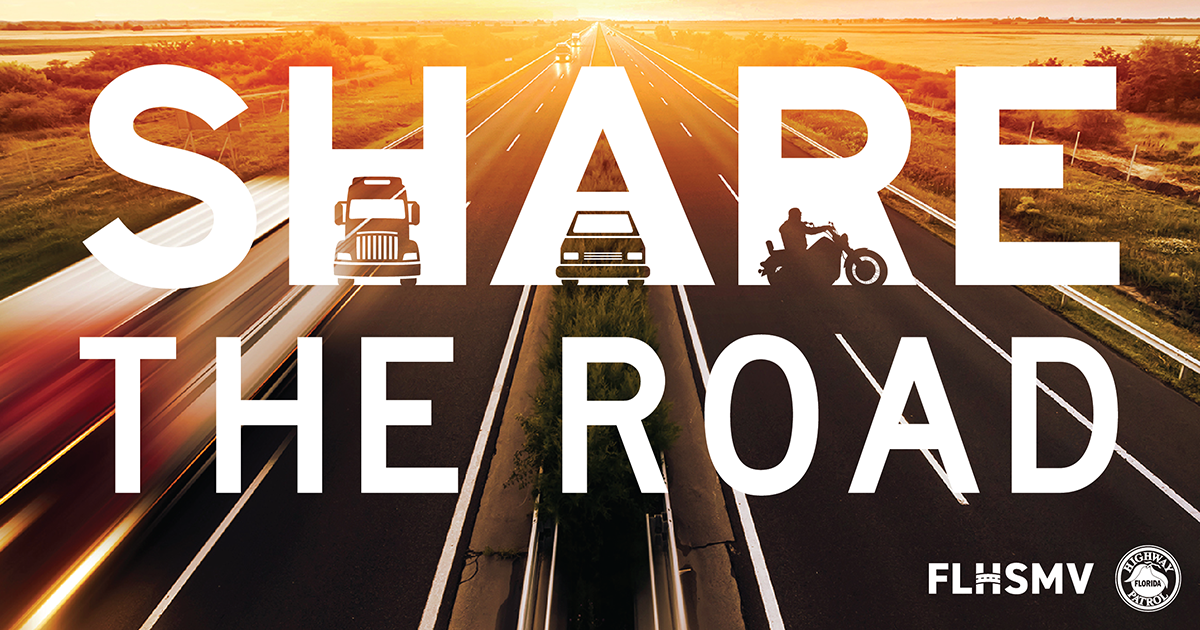

If you notice yourself feeling drowsy, having difficulty focusing, yawning frequently, or drifting out of your lane, these are warning signs that indicate it’s time to pull over and take a break or consider changing drivers. It’s important to recognize these signs and not rely on ineffective methods such as turning up the radio or opening the window to keep yourself alert and safe on the road.
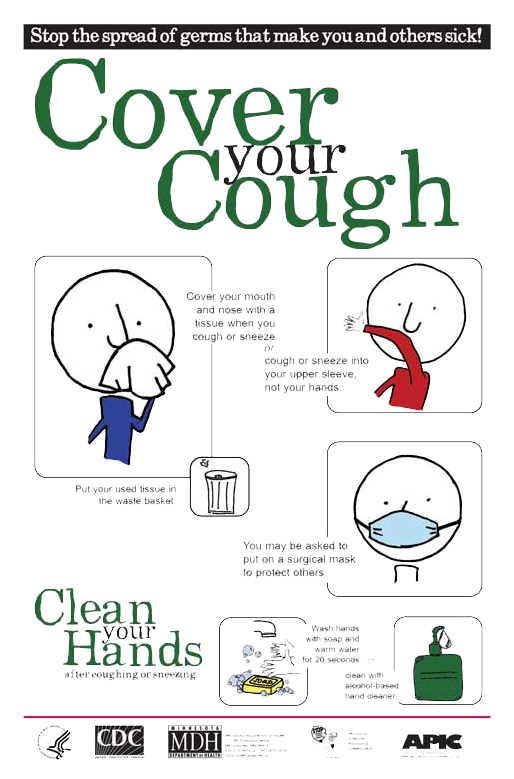
HELP STOP A VIRUS
Wash your hands often with soap and water for at least 20 seconds especially after you have been in a public place, or after blowing your nose, coughing, or sneezing. Use hand sanitizer contains at least 60% alcohol
Avoid touching your eyes, nose, and mouth with unwashed hands. Cover coughs and sneezes Cover your mouth and nose with a tissue when you cough or sneeze or use the inside of your elbow.
Clean and disinfect Clean AND disinfect frequently touched surface daily. This includes tables, doorknobs, light switches, countertops, handles, desks, phones, keyboards, toilets, faucets, and sinks. FEEL sick? Stay home
Here are a few tips to follow at work, while teaching a class and at home.
Treat this as you would any other bacterial infection with a few extra precautions.
Behind-the-Wheel instructors please keep it your vehicles.
Wash your hands several times a day using bacterial soap.
Cover your mouth when you cough or sneeze.
Cough/sneeze into your arm, not your hand, to keep from spreading germs from your hand to people or objects such as a door knob or light switch. Do not use anyone else’s phone or keyboard.
Wipe any high traffic surfaces (countertops, doorknobs, flush knob).
If you feel sick with upper respiratory symptoms,
please go to the doctor and do not go to work.
Try to avoid being close to anyone who is sick.
Use precaution around anyone that you know of that is returning from travel (cruises, foreign countries).
Face masks are not recommended if you are healthy, they will not stop you from contracting the virus.
Classroom settings are particularly in need of cleaning and disinfecting, particularly desks, countertops, doorknobs, computer keyboards, faucets, phones and pens.
Behind-the-Wheel instructors - wipe down car door handles inside and out, steering wheels and gear shifts.
Behind-the-Wheel instructors – if a student is exhibiting any symptoms of sickness, do not hesitate to ask them to reschedule the lesson when they are feeling better.
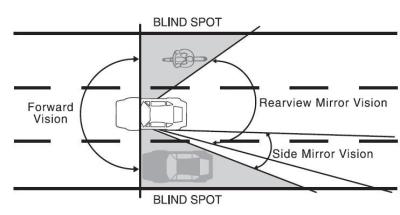
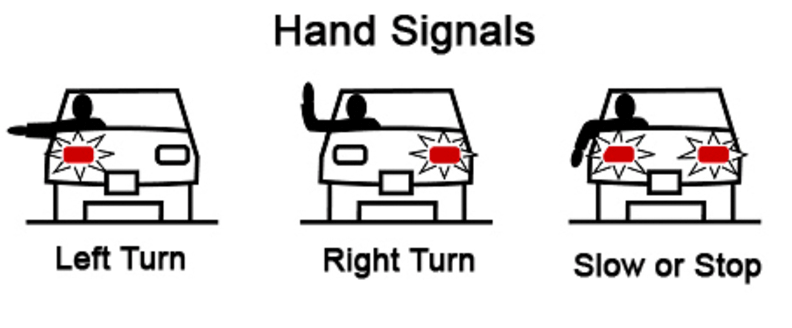
Florida Driving License
All drivers getting their first driver’s license in Florida are required to complete certain steps by Florida Law. This applies to those getting a learner permit or restricted license and those getting an operator’s license.
The DMV Permit Test
Step #1 – TLSAE - Drug and Drug & Alcohol Course
The first step to get your driver’s license is to complete a Traffic Law and Substance Abuse Education course. This course must be taken by anyone - regardless of age - getting their first driver’s license in Florida.
Step #2 - DMV Test Preparation and Practice Test
Once you have completed your TLSAE course the next step is to a written test that covers Florida road signs and road rules. The DMV test (also known as the Permit Test) is available online. Teen’s 15- under18 years old with a parent/guardian proctor nearby to proctor the test (that just means they have to watch you while you take the test). Anyone over the age of 18 taking the DMV Test must take it at a local DMV Office. What happens if I close or exit the browser during the test? If you close the window or exit the browser during the exam, your exam will be considered expired. Expired exams are failed exams. You have one initial attempt and two possible tests retakes. If you fail the test three times online, you will have to visit your local driver license or tax office to take the exam in person.
The DMV EXAM consists of 50 questions. There are 45 questions on road rules and 5 questions on road signs. The passing score for the exam is 80%. You must correctly answer 40 out of 50 questions to pass.
What to bring to DMV office: Make sure you have an appointment. Bring the necessary ID and documents. Florida has new documentation requirements for residents renewing or obtaining a new driver license or identification card. For office visits, you must bring original documents that prove your identity, social security number and residential address.
•Be at least 15 years old
•Provide proof of completion of a Traffic Law and Substance Abuse Education Course
•Provide parental consent form if under 18 and required documents for proof of identity
•Complete your permit exam
•Pass a vision and hearing test:
Learner's Permit – What are the Rules?
Getting a learner's permit in Florida means you have driving privileges, but they are restricted. Once you've obtained your permit you are required to do the following when operating a motor vehicle:
•At all times you must be accompanied by a licensed driver in the front passenger seat. This driver must be 21 years of age or older.
•For the first 3 months after the date you received your permit, you can only drive during daylight hours.
•After the first 3 months, you may drive between the hours of 6:00 am and 10:00 pm.
•If you are under 18 you must keep your learners permit for 1 year before getting your operator’s license.
•If you are over 18 you can get your operator’s license immediately after taking the required TLSAE course and DMV exam.
What's Next - Driver's License!
If you are under the age of 18, the following rules apply to getting your driver's license. A regular driver's license, also known as a Class E license, requires the following:
•You've had no moving traffic citations within 12 months of the issuance of your permit. (You may have 1 traffic violation where adjudication is withheld. Adjudication withheld is when you are not convicted of the offense, while still being held guilty).
•For the first 3 months after the date you received your permit, you can only drive during daylight hours.
•Your parent or legal guardian, or an responsible adult 21 years or older, has certified you've completed at least 50 hours of driving experience, including 10 hours at night.
•You must pass a driving test.
Additionally, Road Test customers must provide the following:
Vehicle in Working Condition – i.e. lights, brakes, turn signals, steering wheel and horn must be in good working condition.
Current Vehicle Registration – The vehicle must have a valid Florida registration.
Current Proof of Insurance on the Vehicle – Provide proof of current Florida Personal Injury Property (PIP) and Property Damage Liability (PDL) insurance.
Driving Log – If Under 18, a parent or guardian must sign a Supervised Driving Log verifying you have at least 50 hours of driving experience, of which 10 hours must be at night.
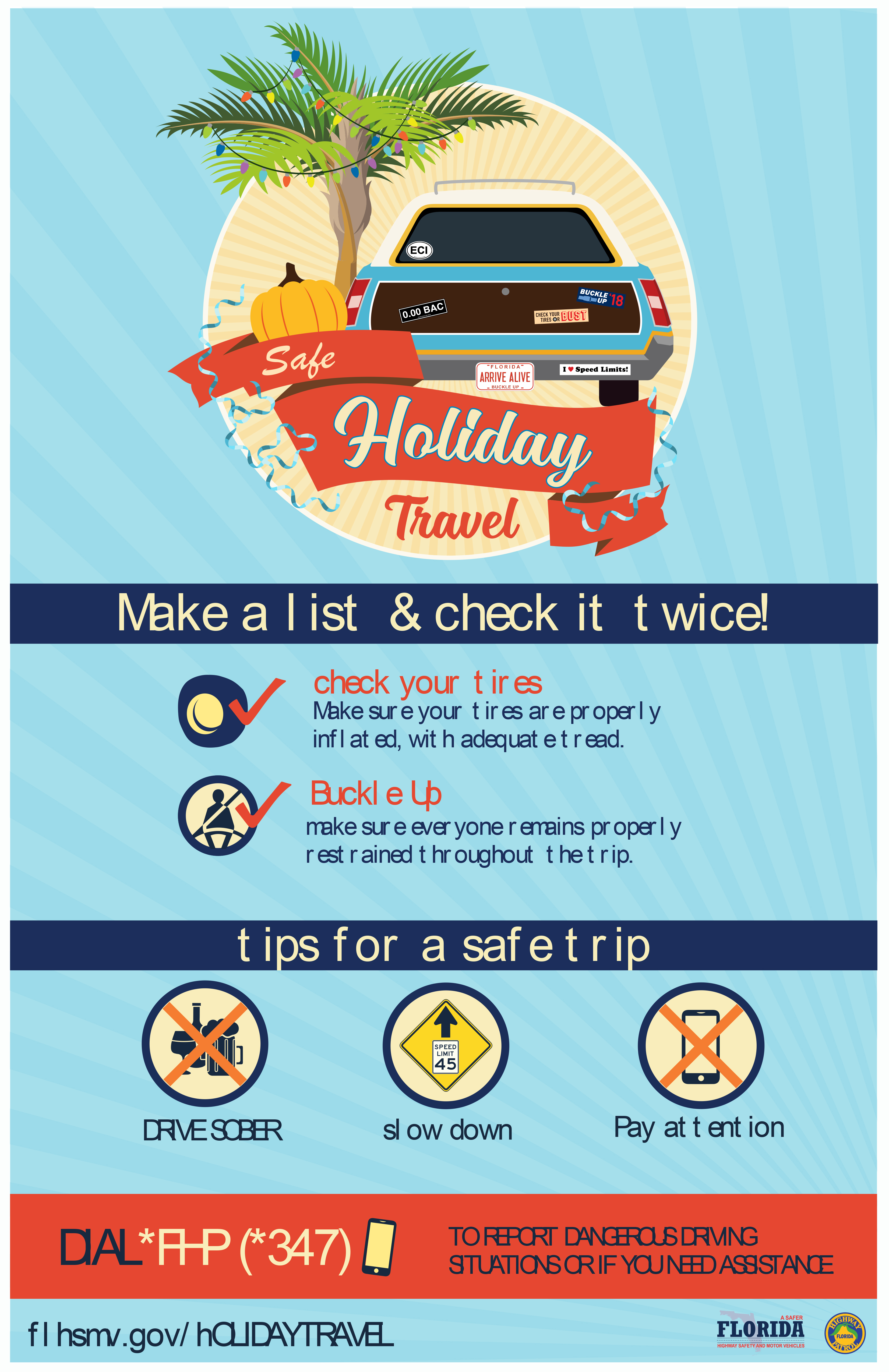
Keep Your Feet Off the Dash!
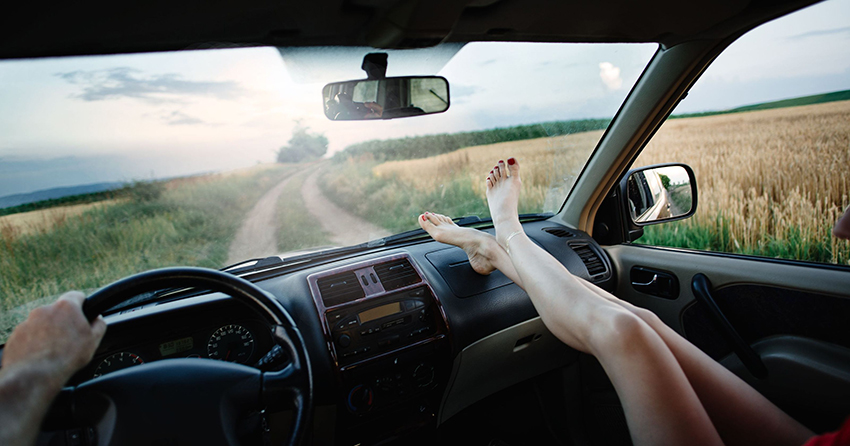
It is summer, so road-trip season is in full swing. If you like your legs, read this before you kick back and relax while your spouse or partner is driving. Many children and adults alike put their feet up on the dashboard of a car when travelling in the passenger seat - it’s comfortable and relaxing.
However it’s also potentially a lot more dangerous than you might have thought, and can be very fatal for the passengers.
"Because airbags deploy very rapidly, serious or sometimes fatal injuries can occur if the occupant is too close to — or is in direct contact with — the airbag when it first begins to deploy," NHTSA says.
Since airbags inflate in less than 1/20 of a second, according to NHTSA, the front passenger won't have time to move his or her knees from the dashboard before impact and inflation.
I never understood why passengers in a car would want to remove their shoes and rest their feet on the dashboard. Maybe it is an opportunity to air out their feet. Perhaps it is comfortable for them. I do not know; but if I were to try it, I would surely be uncomfortable.
Your chances of being involved in an automobile accident are significantly higher than being involved in an airplane crash — especially if you are a passenger in a moving vehicle where the driver is texting — and though the potentially unsightliness of the sight of bare feet may be enough of a reason not to put feet on the dashboard inside of a car, perhaps the increased risk of danger might be more convincing as the one reason why you should keep your feet off the dashboard of the car.
In the event of a sudden collision, there is no time to react; and airbags can deploy in a fraction of a second with a force so powerful that it can cause substantial — and possibly permanently irreparable — bodily damage.
The safest solution is a matter of simple prevention: keep your feet on the floor; and never ever place them up on the dashboard in a moving vehicle.
So go ahead and relax on that road trip — but save the kicking back for the beach.
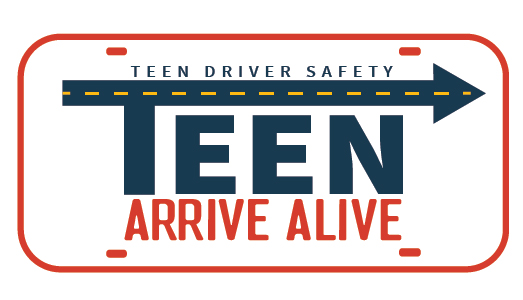
Teen Drivers Awareness Program
With over 750,000 licensed teen drivers in the state of Florida, it is so important for teens and all the adults around them to practice safe driving. The Florida Department of Highway Safety and Motor Vehicles (DHSMV) works to educate teens on the importance of buckling up, observing all speed limits, never driving under the influence of drugs or alcohol, and always keeping hands on the wheel, eyes on the road and mind on driving.
The Florida Department of Highway Safety and Motor Vehicles (DHSMV) is joining the National Highway Traffic Safety Administration (NHTSA) in recognizing National Teen Driver Safety Week from October 16 to 22 and highlighting Teen Arrive Alive Day on October 18 with events throughout the state to remind teens and adults around them to stay safe behind the wheel.
Teen Arrive Alive Day on October 18 is a statewide effort to educate parents and teens on safe driving behaviors to ultimately prevent teen crashes by focusing on enforcing Graduated Driver License (GDL) laws, driving sober and operating a motor vehicle fully engaged without distractions. We want all our teens to Arrive Alive.
GDL laws in Florida allow young divers to safely gain experience under lower-risk conditions before obtaining full driving privileges. In 1996, Florida became the first state to enact GDL laws and since then every state has adopted the GDL program in some capacity. For more information on licensing requirement for teens and GDL laws, please click here.
•Driving is a Privilege – Don’t Lose It
•Your parents can rescind your driver license.
◦The parent or guardian who signs the Parental Consent Form can rescind responsibility for your driving and cancel your license.
•If you get six or more points on your license within 12 months, your license is restricted to “Business Purposes Only” for one year.
◦If you receive six points on your driving record within a 12 month period, your driving privileges are automatically restricted to Business Purposes Only for 12 months or until you are 18, whichever happens first. If you receive additional points during this restricted period, the restriction is extended 90 days for each additional point.
•If you’re under 21, it’s ZERO TOLERANCE for drinking and driving.
◦Drivers under the age of 21 with a blood alcohol level of .02 percent or more will have their license immediately suspended for six months. A second offense will result in a one year suspension. Refusal to submit to testing (first offense) results in a suspension of 12 months, 18 months on a second offense.
•If you get a moving violation conviction while you have a Learner’s License, you have one more year until you can get an Operator’s License.
◦If you receive a moving traffic conviction while you have a Learner’s License, the one-year period you are required to hold your Learner’s License will be extended for one year from the date of the conviction, or until you are 18 years old, whichever happens first.
•You must be in compliance with school attendance, or you’re ineligible to obtain or maintain your license.
◦If you are not in compliance with school attendance, your driving privilege can be suspended until you provide proof you have attended school for 30 consecutive days.
•If you’re convicted of possession of tobacco – you lose your license for a minimum of 30 days.
◦If you are convicted for possession of tobacco or nicotine products, and you are under age 18, your license will be suspended for 30 days or more.
There are driving curfews for minors with learner’s and operator’s licenses:
•Driving Curfews for Minors
License Type Hours Note:
Learner's License Daylight hours first three months license issued--10pm after three months ALWAYS accompanied by a licensed driver 21+
16 year old with Operator's License NOT between 11pm to 6am Unless driving to or from work OR accompanied by a licensed driver 21+
17 year old with Operator's License NOT between 1am to 5am Unless driving to or from work OR accompanied by a licensed driver 21+
•Teen Driver Safety Tips
Before you drive:
•Put on your seat belt and make sure all your passengers buckle up, too.
•Keep passengers at a minimum. Extra passengers can be distracting for an inexperienced teen driver. Never try to fit more people in the car than you have seat belts for them to use.
•When driving to a new place, get complete directions before you go. Figure out exactly where you are going before you head down the road.
•Maintain your car’s optimum performance. Check your tires and make sure they are inflated to the right pressure according to your owner’s manual. Bald tires, a slipping transmission, bad brakes, a dirty windshield or a hesitant engine could lead to accidents.
•Make sure your car has gas in it. Don’t ride around with the gauge on empty and risk getting stranded somewhere unsafe.
•Be responsible, don’t drink and drive, and don’t ride with anyone who has been drinking. Call parents or friends to take you home if you need a ride.
•Never drive under the influence of drugs. Don’t ride with anyone who has been using drugs. Even some over the counter drugs can make you drowsy so check labels for warnings.
•While you drive:
•Stop speeding before it stops you. Obey all speed limits, stops signs, and traffic lights. Going too fast gives you less time to stop or react. Excess speed is one of the main causes of teenage crashes.
•Use turn signals to indicate your intention to turn or to change lanes and to give the drivers behind you enough time to react before you take the action. Then make sure the signal turns off after you’ve completed the action.
•Keep your eyes on the road, hands on the wheel and mind on driving. Don’t adjust the radio or any device, talk or text on your cell phone, put on make-up, comb your hair or eat while driving. Wait until you can pull over safely and stop because even taking your focus off the road for a few seconds could lead to a crash.
•Don’t blast your music. You might miss hearing a siren or a horn that could warn you of possible trouble. •Share the road with others – watch out for motorcycles, bikes and pedestrians.
•Don’t leave your car in cruise control when you’re driving late at night or when you’re tired. If you fall asleep at the wheel, the car will crash at the speed you’ve set your cruise control to maintain.
•Be aware of the weather, traffic congestion and road conditions – stay alert! Be a courteous and safe driver at all times – Arrive Alive! . [source: flhsmv]
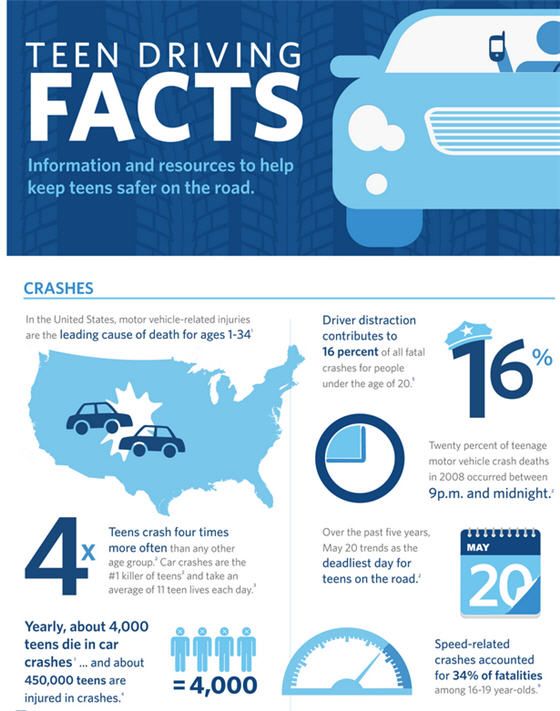
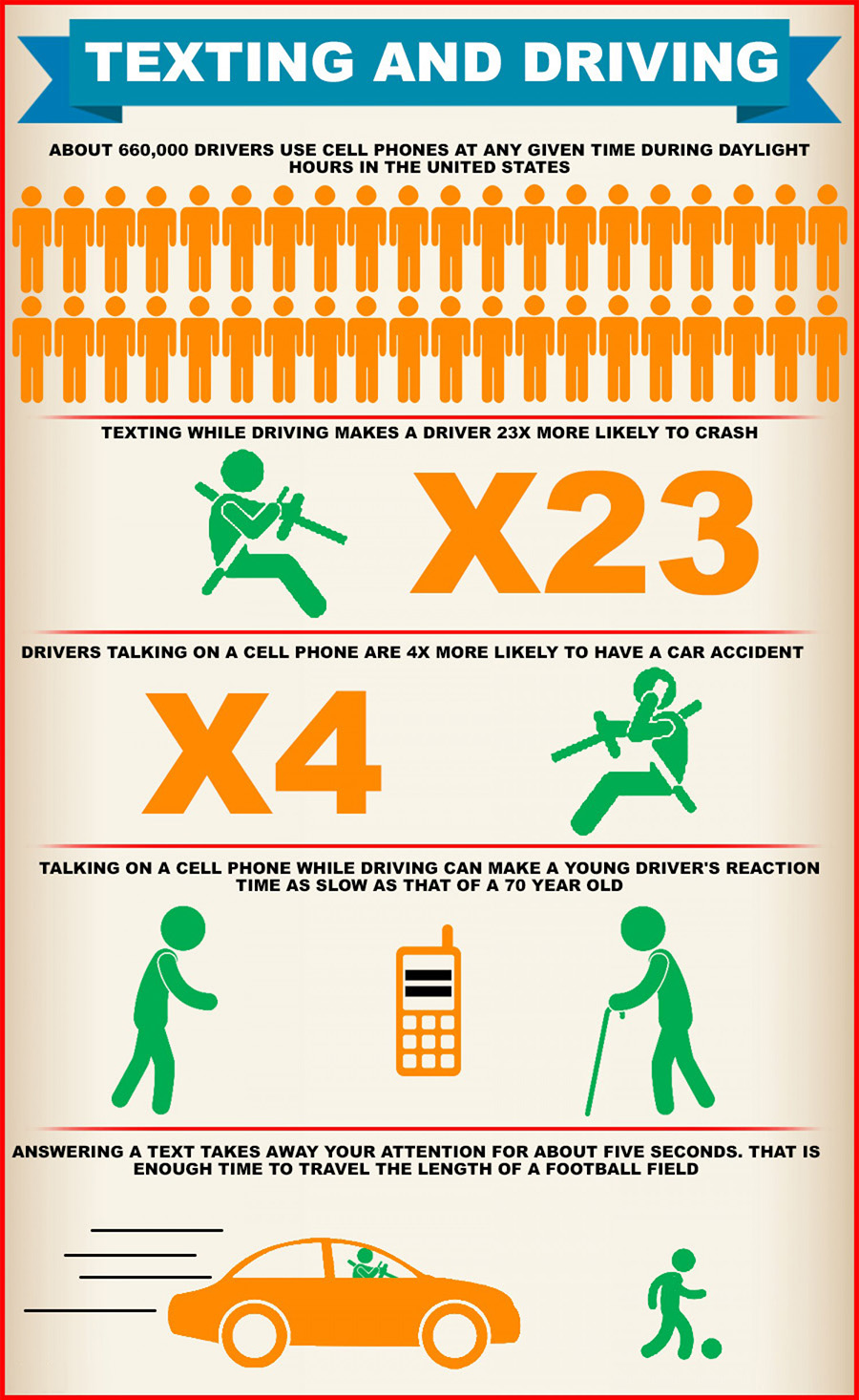
Today, we drive safer cars on safer roads; decades of advertisements and public information campaigns have made most of us safer drivers. As a result, the U.S. logged the lowest accident fatality rate ever recorded [source: NHTSA]. Despite this progress, unfortunately, the number of auto accidents and fatalities nationwide is still quite staggering: Last Year here were almost 6 million car accidents in the U.S., leading to more than 37,000 deaths. What's more, automobile accidents are the leading cause of death for people between the ages of three and 34 in this country.
Improvements in technology will continue to help bring those numbers down, but the bottom line remains that most car accidents are the result of human error. The best way to reduce the risk of being involved in an accident is to practice safe driving behaviors. Whether you're just learning to drive or you've been behind the wheel for decades, it's a good idea to review some basic rules for safe driving. Here are 10 driving tips that will help bring you and your passengers home unharmed.
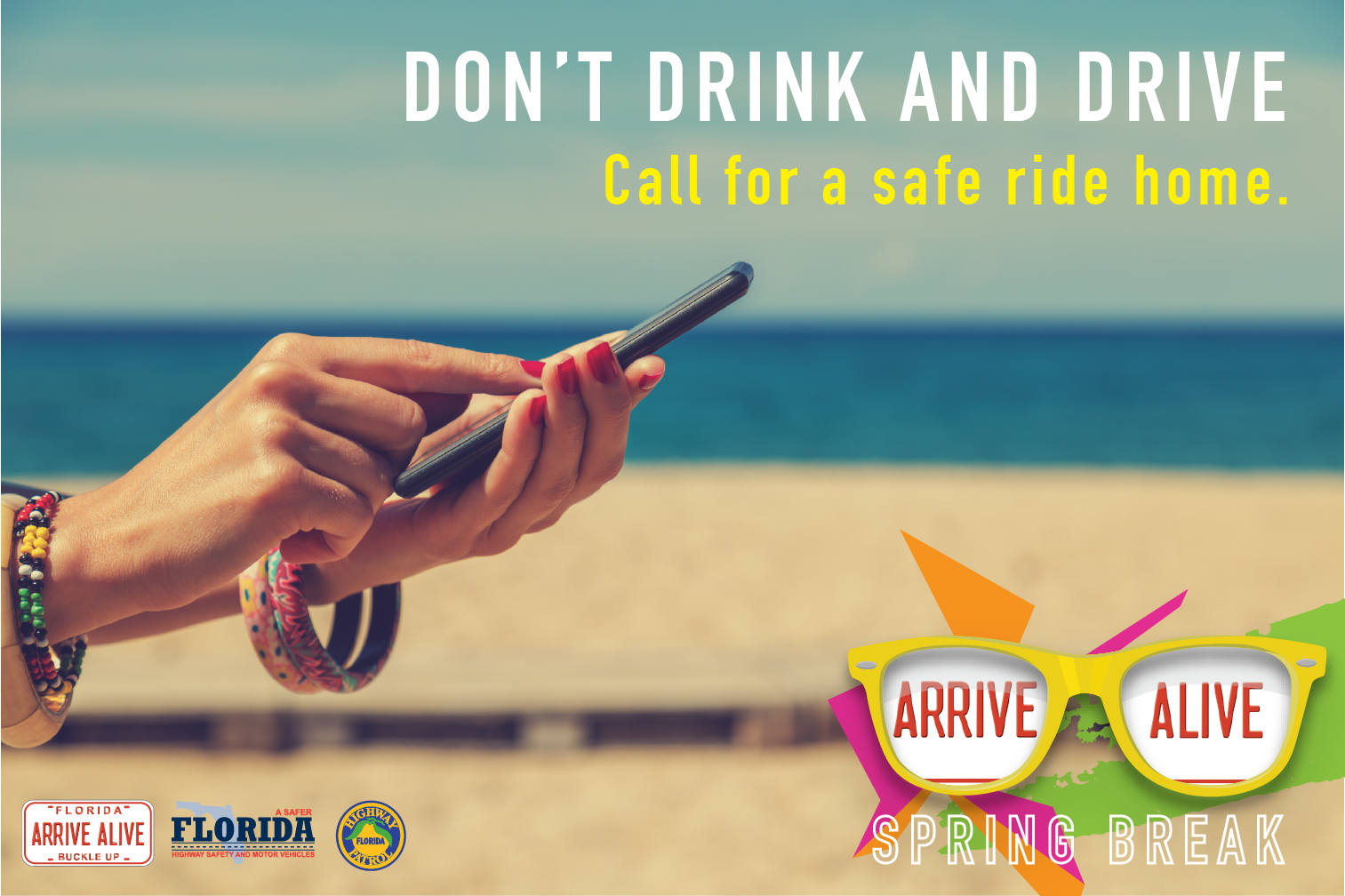
Spring Break: Arrive Alive, Don’t Drink and Drive!
Florida’s beautiful beaches and tourist attractions lure thousands of spring breakers every year. As more drivers take to Florida roadways, the decision to drive under the influence of drugs and alcohol continues to be a serious problem – more than 15 crashes a day in March 2016 involved drivers who registered alcohol levels above the legal limit.
Throughout the month of March, FHP and our state and local law enforcement partners will be focusing on the state’s drinking age laws and working to keep impaired drivers off the roads.
Driving impaired not only puts everyone on the roadway in danger, it can have serious legal and monetary consequences. Penalties for DUIs can include expensive fines, license revocation and jail time and convictions can remain on your record for 75 years. Enjoy Spring Break responsibly and plan ahead, designate a driver or call a ride service – it is much cheaper than a DUI arrest.
•The legal drinking age in Florida is 21. Anyone under the age of 21 in possession of alcohol can be cited for a second-degree misdemeanor, which can lead to costly court fees, fines and other lasting consequences.
•It is illegal to sell alcohol to anyone under 21 or buy alcohol for anyone under 21.
•Possession of an open alcoholic beverage container in a vehicle (in motion or stopped) by the driver and or the passenger(s) is a violation of Florida law.
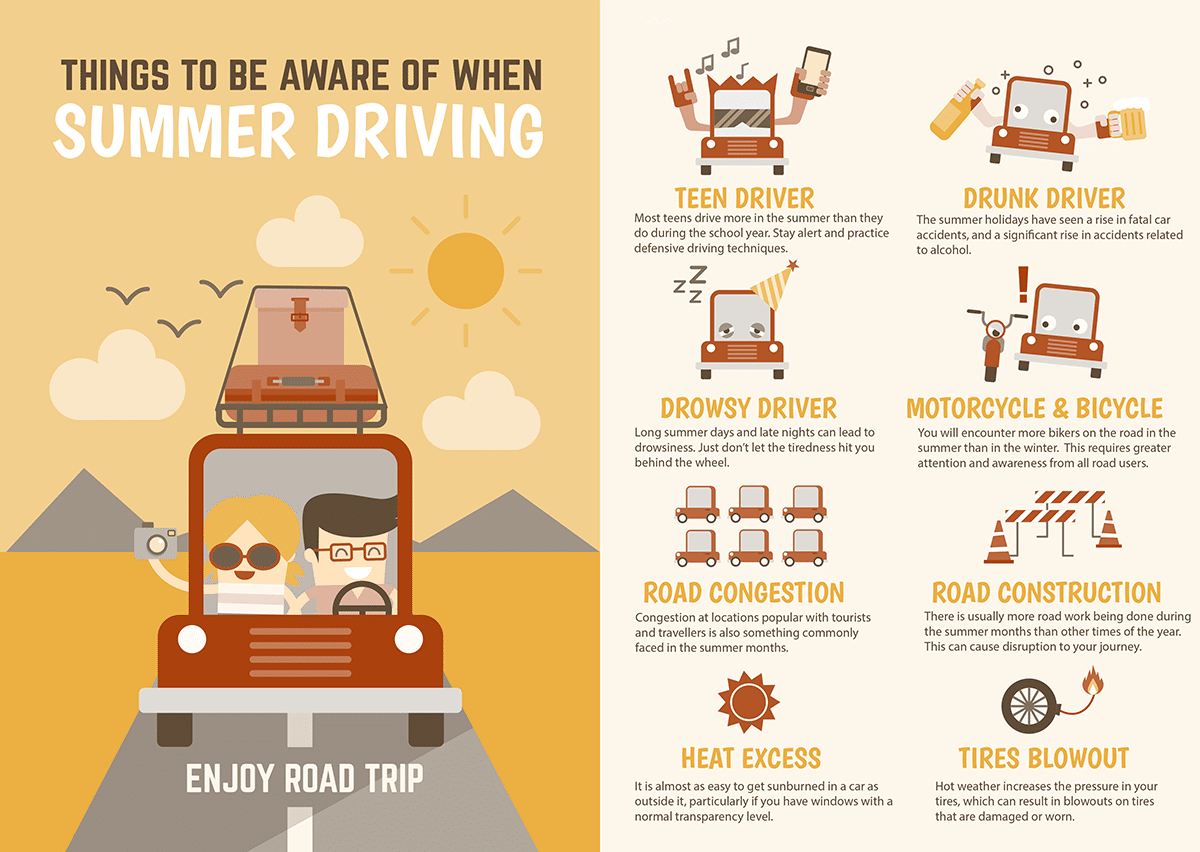
Life-Saving Summer Driving Tips for Teens
The period of time between Memorial Day and Labor Day is often the most fun season of the year. School is out, the sun is shining, and summer adventures on underway. It’s an exciting time, but summer is also the most dangerous time of year for teen drivers. The roads are crowded with new drivers, vacationers and college students who have come home for the season, and the result is the highest percentage of automobile collisions for the whole year. If you are hitting the roads this summer, follow these tips to stay safe:
Watch Your Speed
Most crashes are caused by aggressive driver behavior and speed. Take it slow and be aware of oncoming cars and children playing. Lower speeds aren’t just safer — they also equal better gas mileage!
Take Your Time
If you are meeting up with friends or heading to work, give yourself more time than you think you need to get there. Speeding is a factor in over 30 percent of all fatal crashes, so avoid rushing to get to where you need to go.
Pay Attention to the Weather
Summer rains can be hazardous on the roads. If it is raining, turn your headlights on and maintain a safe following distance between your car and the next.
Stay Focused
No text message or phone call is more important than your safety, and searching your phone for music, applying makeup and eating behind the wheel can also cause crashes. Remember this: reading or sending a text means you are looking at your phone, not the road, for nearly five seconds. If you are driving on the freeway at just 55 mph, that is the equivalent of driving an entire football field’s length with your eyes closed!
Remember these tips next time you hit the road this summer to stay safe while enjoying the season!
TEN TIPS FOR A SAFE DRIVER
1, Stop Signs and Red Lights: When stopped at a stop sign or red light, spell S-T-O-P to yourself before proceeding. Always turn your head to look left, then right, straight ahead, then left again before moving into an intersection.
2, Distracted Driving: 37% of collisions are caused by distracted driving. You have one task at hand while driving – arriving safely at your destination. It is illegal to use any electronic device while driving, do not use Cell/ Mobile Phone 2 seconds error can be deadly it can wait even if it is hands-free.
3, Speeding: Obey the speed limit at all times and watch for neighborhood “slow zones”.
4, Following Too Closely: Staying back a few feet from the vehicle in front of you could protect you in a crash. When traveling behind other vehicles, leave at least a four second space between vehicles.
5, Changing Lanes: Don’t forget to look over your shoulder and check your blind spots for vehicles and bicyclists. Always use turn signal when changing lanes anywhere local or highways.
6, Take Breaks: Tired driving can be as dangerous as drunk driving. If you are feeling tired or hungry during your shift, pull over in a safe place and take a rest.
7, Watch Out For Bikes: You have 2,000 pounds of metal around you and they only have helmets! Watch for bicyclists when turning and keep a safe distance when passing them. Remind passengers to exit curbside to prevent opening doors into bicyclists.
8, Watch Out for Children: Drive like your kids live there. Children are hard to see and predict. Obey slower speed limits in school zones. It is illegal to pass a school bus that is stopped.
9, Plan Ahead: Expect others to make mistakes and plan for how to handle them. Do not assume that a vehicle coming to a stop sign is going to stop. Be ready to react if a pedestrian, bicyclist or other vehicle fails to yield or doesn’t give the right of way.
10, Weather: During bad weather, slow down and avoid making sudden moves or slamming on breaks. Slippery roads can make you lose control of your vehicle.
Skills that put you in control
Before you get behind the wheel of that two-ton frame of glass and steel, here are some tips to help you stay in control:
•Stay focused. Driving is primarily a thinking task, and you have a lot of things to think about when you're behind the wheel: road conditions, your speed and position, observing traffic laws, signs, signals, road markings, following directions, being aware of the cars around you, checking your mirrors — the list goes on. Staying focused on driving — and only driving — is critical to safe driving.
•Distractions, like talking on the phone or eating, make a driver less able to see potential problems and properly react to them. It's not just teen drivers who are at fault: People who have been driving for a while can get overconfident in their driving abilities and let their driving skills get sloppy. All drivers need to remind themselves to stay focused.
•Stay alert. Being alert (not sleepy or under the influence) allows you to react quickly to potential problems — like when the driver in the car ahead slams on the brakes at the last minute. Obviously, alcohol or drugs (including prescription and over-the-counter drugs) affect a driver's reaction time and judgment. Driving while drowsy has the same effect and is one of the leading causes of crashes. So rest up before your road trip.
•Watch out for the other guy. Part of staying in control is being aware of other drivers and roadway users around you (and what they may suddenly do) so you're less likely to be caught off guard. For example, if a car speeds past you on the highway but there's not much space between the car and a slow-moving truck in the same lane, it's a pretty sure bet the driver will try to pull into your lane directly in front of you. Anticipating what another driver might do and making the appropriate adjustment helps reduce your risk.
Eight Secrets for Super Driving
When you drive defensively, you're aware and ready for whatever happens. You are cautious, yet ready to take action and not put your fate in the hands of other drivers. According to the U.S. Department of Transportation, 90% of all crashes are attributed to driver error.
Following these defensive driving tips can help reduce your risk behind the wheel:
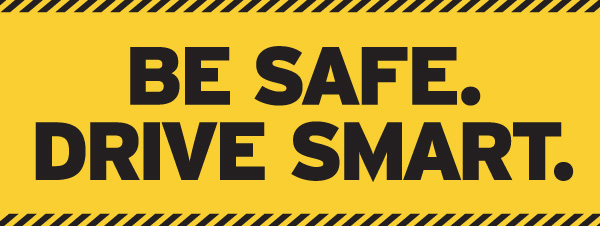
TIPS for Parents and Caregivers
As a parent or caregiver, you want to do everything in your power to make sure your children and older parents are safe every time they walk out the door. The resources below will help you and your loved ones do just that.
•Everyone Is a Pedestrian! Whenever you are not in your vehicle, you are a pedestrian! This brochure offers tips for both drivers and pedestrians to stay safe while sharing the road.
•Prevent Pedestrian Crashes: Parents and Caregivers of Elementary School Children Elementary school children are very active and impulsive. Although they are learning and growing, school-age children 10 and younger still need guidance and supervision when playing and walking near traffic. Learn the myths and facts.
•Five Tips to Keep Your Children Safe on Their Way To and From School Strengthen your traffic safety knowledge: Teach and reinforce your children's pedestrian safety habits.
Tip #1 − Walking Safely Pedestrians 10 and younger must be accompanied by an adult or young adult on their way to and from school. Show them how to cross the street by stopping at the curb and looking left-right-left for traffic before crossing. Learn about pedestrian safety from rating the walkability of your neighborhood to understanding the growth and developmental stages of your children's abilities.
Tip #2 − Biking Safely The two best protections when biking to and from school are a properly fitted bicycle helmet and a good grasp of traffic safety rules. Let your child choose the helmet, and explain it's "just part of the gear," like football, skiing or hockey equipment. Learn more about bicycle safety, from selecting the right helmet to inspecting your family's bikes before hitting the road.
Tip #3 − Riding the Bus Safely School buses are the safest mode of transportation for getting children back and forth to school. Even so, your kids need to be especially careful around the school bus "danger zone" − 10 feet in front, 10 feet behind, and on each side of the bus. Before they go back to school or start school for the first time, take advantage of these bus safety resources, and teach your kids these common-sense practices.
Tip #4 − Riding in the Car Safely Did you know children in the front seat are 40 percent more likely to be injured in crashes? If your kids are 12 and younger, make sure they ride in the back seat. Learn more about car safety, from understanding the child passenger safety laws in your State to selecting the right seat for your child.
Tip #5 − Driving Safely As a parent, you're the #1 influence on the kind of pedestrian, bicyclist and driver your child will become. Set a positive example and keep your children safe. Whether walking, biking or driving, stay completely focused on the road and put your cell phone away when in traffic. Learn about driving safely and find out the laws on distracted driving in your State.
•Resident's Guide
For Creating Safe and Walkable Communities Want to improve the walkability of your neighborhood? Learn from the examples of other communities working to improve pedestrian safety.
•Walkability Checklist
English | Spanish | Asian or any other Languages etc. How walkable is your community? Take a walk with your child and find out for yourselves.
•For Children
A Kid's Guide To Safe Walking This colorful pamphlet will help you teach young children safety tips for crossing the street and things to remember when walking.
•For Aging Adults
Stepping Out – Mature Adults: Be Healthy, Walk Safely Share this resource with your aging parents to help them maintain their safety while walking for exercise or running errands. [sourse NHTSA]
Road Rage – Aggressive Driving
Anger Management
Aggressive driving behaviors, such as speeding and tailgating, can often lead to road rage. According to the National Safety Council, motorists rate this as a top threat to highway safety.
Here, we provide practical tips on how to avoid road rage as well as some startling stats, common reasons that cause road rage and wisdom from experts to ensure your safety while driving.
7 Ways to avoid road rage:
“If we can put ourselves in the shoes of other drivers, we are more capable of understanding their behavior and staying calm. If we can’t appreciate their situation, then we are more likely to get offended, angry and even rageful if their driving bothers us.” Dr. Robert Nemerovski, psychologist specializing in anger and anxiety.
Common reasions drivers experience road rage:
“There’s a lot of talk about driving under the influence, and oftentimes people are referring to drugs or alcohol. But people are driving under the influence every day and that influence is rage.” Shannon Munford, anger management expert.
Consequences of Road You are the Solution to Reckless and Distracted DrivingRage
If a law enforcement officer catches you engaging in road rage, you can be charged with a criminal offense. This means that you will need to and in addition to you risk:
For all of the time and money that you'll end up losing, road rage is simply not worth it.
Danger: You don't know what other people are capable of or what their state of mind might be. If you succumb to road rage, the other driver could have a deadly weapon, putting you in serious danger even death.
Bottom line: a few moments of anger are simply not worth a lifetime of sorrow.
OWNING A CAR
The Financial Reality of Owning a CAR
Buying your own car for the first time can be an exciting experience, but it is also an expensive one, so you should make sure that you are prepared for the financial reality of owning and running a vehicle before you commit to this major new responsibility. The NATION Driving School estimates the average cost of running a car is $9211 a year, a figure that has increased by almost 2% over the last year. You can reduce some of the costs involved by choosing your car carefully, but some expenses will be higher simply because you are a young driver.
Standing Costs and Running Costs
The costs involved with owning a car can be divided into those that you will have to pay, regardless of how far or often you drive it, and those that will depend on how much driving you do. You will have to pay the standing costs even if you never take your new vehicle out on the road, but the running costs are usually given per mile since they will only begin to build up when you start driving your car.
Standing Costs
1. Buying Your Car: The largest and most obvious expense will be the cost of the car itself, even if you are going for a cheaper, second hand vehicle rather than a brand new car. It is sensible to save as much as you can before you buy, since you will need a deposit of 10-20% even if you are not buying outright. Financing can be expensive, particularly for young people lacking credit histories, so if you can avoid borrowing or borrow from a family member instead, you will save a lot on interest. The money you spend on your car can sometimes be recovered by reselling or trading in when you are ready to move on to your next vehicle, but you should remember that the value of your car will decline with age. This is known as depreciation. If you resold your car the day after you bought it, you would be able to recoup most, if not all, of the original cost, but after a few years of wear and tear, your car might not be worth much of its original price. Some cars have better resale value than others, and choosing the right car can also help to keep other costs down. Smaller, less powerful cars can be much cheaper to register, insure and run, and maintenance costs can also vary. Check consumer reports before you buy to find the right make and model for you.
2. Title, Tax and Tags: The purchase price for your car may not include sales tax, which can add a substantial amount to the total cost. You will also need to budget about $400-500 for the costs of the title, which transfers ownership of the vehicle to you, car registration and a license plate. The title and license fees will only need to be paid once, and you will also need to pay a one-off initial registration fee. You will also need to budget for an annual registration tax, which will be about $75-80 a year, although it will depend on where you live, and what type of vehicle you own. Choosing a smaller car will save you a little on your registration fee, as well as making your gas and insurance costs cheaper.
3. Insurance and Breakdown Cover: The cost of insurance can be high for a young driver, but you have to be insured before you can obtain financing or register your own vehicle. Basic auto insurance should cover:
Liability: covers damage you might cause to other people’s property, and is usually required by law
Collision: covers damage to your own car in an accident.
Comprehensive: covers damage due to other causes, such as theft, vandalism or fire
Additional coverage is available for personal injury, collisions with underinsured drivers, or to cover the remainder of what you owe on your car loan.
The average cost of insurance for a driver with a clean record is $1029, but younger drivers will pay more. According to money.co.uk, a teen driver can be up to seven times more likely to have an accident than a middle-aged driver, for every mile that is driven. You can reduce your insurance premiums by choosing a smaller and less powerful car, and driving safely to avoid traffic violations and start building up a no-claims bonus. You might also want to select a policy with higher deductibles, which are the portion of the costs that you will have to pay out of your own pocket before the insurer will pay out, but remember that setting it too high will be a false saving if you find yourself unable to cover it if something does happen to your car. In addition to your auto insurance, you should also consider taking out breakdown cover from a company like NATION Driving School to ensure that help will be available if something goes wrong while you are driving.
Running Costs
1. Maintenance and RepairsIn order to keep your car running, you will need to perform some regular maintenance. It is a good idea to get into the habit of performing regular checks of the air filters, fluid levels and tire tread and pressure. How often you need to replace parts will depend on how much driving you do. You should budget for:
- Oil changes, every 3000 miles, usually cost at least $25
- Brake pad replacement, every 30,000 miles, usually cost about $250 each end
- Tire alignment, if you notice the car drifting to one side, usually about $80
- Tune up, if your car is not running right, usually about $130-280
- Tire replacements, every 25,000 miles, usually $100-200 per tire
The NATION Driving School estimates that basic maintenance will cost about 4.6 cents per mile, but you should also allow some room in your budget for any unexpected repairs that might be needed.
2. Gas and Parking ChargesGas, parking charges and tolls can add up to form a significant part of your car budget. The average driver travels 12,000-15,000 miles a year, so choosing a car that is more fuel-efficient can result in significant savings. A smaller engine with fewer cylinders will use less gas per mile, and it will also be cheaper to insure.[sourse: teendriving]
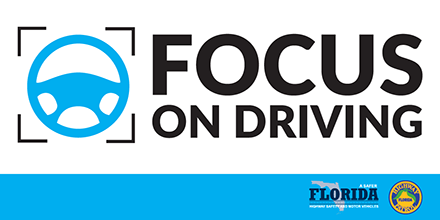
You are the Solution to Reckless and Distracted Driving
1. Tailgating, or driving too close to the car in front of them.
2. Failing to stop at red lights or stop signs.
3. Driving too fast or exceeding the speed limit.
4. Braking suddenly on busy and main road.
5. Not using turn signals when changing lanes or turning.
6. Driving while under the influence of drugs or alcohol.
7. Driving while Distracted, including talking on the Phone, Texting, Loud Music and Eating.
8. Failing to use headlights at night or in the rain.
9. Making illegal turns or lane changes.
10. Not keeping your Head, Thoughts clear we must at time of Driving think &focus on driving only.
Weather & Road Conditions Driving too fast for weather conditions is dangerous, and leads to fatal car accidents. Although heavy rains make it unsafe to travel at normal speeds, some drivers just won’t slow down. Driving on icy and snowy roads always poses a risk, but drivers who drive faster than they should in rainy, snowy, or icy conditions often cause car accidents with tragic results.
Texting While Driving and Distracted Driving Cell phone use while driving is well known to be dangerous, and texting while driving puts the driver, the passengers and all travelers on the road at great risk of harm. The driver’s eyes are not on the road ahead; instead he or she is mentally focused on reading an incoming text or email, or in composing the text or email. While the attention of the driver is shifted off the road and onto the digital device, the vehicle travels a great distance, and the potential for rear-ending another car, swerving out of lanes and into oncoming traffic and other dangers is very real. Other driver distractions include daydreaming, talking on the phone, playing with various systems within the vehicle, eating, putting on makeup or even reading.
Reckless or Aggressive Driving Some drivers become aggressive when they get behind the wheel. A normally friendly individual can have a complete change in personality, becoming aggressive and driving unsafely. Activities such as tailgating, speeding, improper passing, ignoring traffic control devices, weaving from lane to lane and other poor driving behavior put all others sharing the streets or highways at high risk of an injury. The majority of high-risk driving takes place in Vancouver and in other communities in the Lower Mainland.
Driver Fatigue ICBC has reported that an alarming number of drivers – 30% — have admitted that they have nodded off while behind the wheel, and 43% admitted to driving while fatigued. Our lives are busy, and many people just don’t get enough sleep. Others are taking medications that can increase drowsiness as a side effect. Accidents involving driver fatigue occur more frequently during the summer months, when many people take longer road trips.
Speeding Drivers who exceed the speed limit or operate their vehicles too fast for the conditions are responsible for a great number of injury accidents and deaths in British Columbia every year. Speeding drivers endanger all others sharing the street or highway, as well as putting their own passengers at risk. Many people speed as a habit; others may be late for work or school or have other problems that they are trying to solve. Unfortunately, the truth is that it is better to be late than to find yourself in the hospital or to cause the death of another person through your actions.
Deadly Sins of Distracted Driving: Wrath (of Music)
April is Distracted Driving Awareness Month. To educate others on the woes of distracted driving, all month long we’ll be highlighting the “seven deadly sins of distracted driving” – seven things that can have a profoundly dangerous effect on your driving ability.
Of all the activities one may engage in while driving, listening is music is perhaps the most accepted. Some studies say that 90% of people driving in vehicles listen to some form of music in their car – and that may be an underestimation.
We can’t blame commuters either – studies have shown that listening to music while in high-traffic situations can ease the stress, boredom, and anxiety that comes with being stuck in congested roads. Additionally, background noise such as radio music has been shown, in some cases, to improve focus and concentration, which can be beneficial when you’re driving.
However, for all its benefits, listening to music while driving can also be extremely distracting – especially if you embrace its decibel-topping, eardrum-blasting wrath.
The Wrath of Loud, Aggressive Music
Listening to music in your car can be good, even beneficial, to your driving, but listening to loud music in your car can be incredibly distracting. A study by scientists at Newfoundland’s Memorial University found that reaction time can slow as much as 20% when someone is listening to loud music. That benchmark was at 95 decibels, which is about as loud as a power lawnmower.
That might seem really loud, but consider that the middle volume of a standard music player (such as your phone) is about 94 DB. That’s not too loud at all – and car radio volume can frequently hit 100 dB, especially on the freeway. Teen drivers are especially susceptible – 93% of novice drivers play loud music when they’re behind the wheel.
Your Personal Mixtape is Distracting
Above all, it seems like music in your car is most distracting when it’s your favorite tunes. At this point, drivers tend to focus more on the music than the road, leading to a number of dangerous situations.
This was highlighted in a 2013 study at Ben-Gurion University in Israel, where teen drivers were tested on their driving skills while listening to various music playlists. Of the 85 subjects, 98% made errors when listening to their own music – and 17 actually required instructor intervention to prevent a collision. By comparison, 77% made errors when listening to safe-driving music, which consisted of easy listening, soft rock, and light jazz accompaniments.
While we can’t say never listen to music you enjoy, it’s a good idea to keep in mind the potential for distraction when you’re jamming out to your mixtape on the road.
Our Verdict: Better Safe than Sorry
You may look at this data and think it doesn’t affect you, but our personal stance is better safe than sorry. Regardless of the actual music, choosing your music via radio dials or music player is a proven physical distraction – you’re literally taking your hands (and eyes) off the wheel.
If you’re going to listen to some sweet tunes, plan your playlists ahead of time and listen to it all at a reasonable volume. When it comes to music on the road, “too much of a good thing” definitely applies.
Reckless driving is a type of traffic violation in which a driver displays complete disregard for on-the-road signs, signals, and laws. It is a common cause of car accidents, and, because it usually involves high speeds or extremely dangerous driving tactics, it often results in the injury or death of one or more people involved. Fortunately, a reckless driving accident can be prevented. By knowing how reckless driving accidents are commonly caused and following a few safety tips, drivers can keep themselves – and other drivers on the road – safe from harm. National Teen Safe Driving Week is one of the main reason for to educate young teens about reckless driving, but what can you do to help fight against unsafe driving?
Car crashes, not “accidents,” are the leading cause of death for teens in America. As an organization, Impact Teen Drivers makes the conscious choice not to use the word, “accident,” because it implies inevitability. Car crashes are not inevitable; they involve decisions made by drivers and passengers. As individuals, we all have the power to unite against this public health epidemic and prevent more tragedies from occurring.
It is absolutely vital to make the resolution never to drink and drive, but seventy-five percent of teen crash fatalities do not involve drugs and alcohol, so we have to consider the many other decisions that can also be lethal in the context of a car. Consider everything that distracts you behind the wheel—your passengers, your radio, your breakfast, your phone…and pledge to stop trying to multitask. First and foremost, make the conscious commitment to safe driving by avoiding everything that distracts you. Just focus on driving.
Secondly, speak up as a driving instructor or a parent or a passenger. Being seen as uncool, bossy, or unpleasant is NOT the worst-case scenario. A moment of tension will NEVER be the worst-case scenario. Don’t just speak up when you are the passenger either—take it a step further and proactively initiate discussion with the people in your life. Whether they are your peers, elders, juniors, etc., everyone can benefit from being reminded to drive safely. Having these conversations will remind you to put your money where your mouth is and always role model good driving habits. Parents, remember you are the number one influencer of your teen’s driving attitude and behavior.
In addition to these simple yet life-saving strategies to fight against the number one killer, there are abundant resources to help you make an even bigger mark. We offer a peer-to-peer messaging contest, “Create Real Impact,” twice a year, which allows for students (ages 14-22) to promote their solutions to reckless and distracted driving via original creative works.
According to the most recent U.S. Census reports, there are more than 10.8 million car accidents every year. Nearly 36,000 of those result in the deaths of drivers or passengers involved. Unfortunately, many of these deaths are the result of reckless driving and, had the drivers been operating their vehicle more carefully, could have been prevented. Help prevent another reckless driving accident from happening by
A reckless driving accident is typically caused by one or more poor decisions by the driver. By following rules of the road and traffic laws, drivers can usually avoid this type of accident.
Following these tips for safe driving and preventing a Reckless Driving Accident:
While these errors may not only result in a reckless driving accident, they can also lead to a driver being ticketed or cited for a traffic violation. Each of these is illegal and makes the driver subject to fines, jail time, community service, and more.
Most reckless driving accidents can be prevented, simply by driving safely and per the rules of the road. Additionally, there are a few safety tips that drivers can follow to ensure they and their passengers are not victims of a dangerous reckless driving accident.
Always steer clear of any cars or drivers that look dangerous. If you see a car weaving in and out of traffic, tailgating too closely or speeding excessively, move over a few lanes and get out of their way.
Report dangerous drivers. If possible, call local police when you spot a driver operating their vehicle particularly recklessly. If a truck driver is the one doing the reckless driving, call the number of the back of their trailer and report it to their employer.
Always wear your seat belt and encourage your passengers to do the same. Seat belts can go a long way in preventing injury in the event an accident occurs.
Never drive distracted. Don’t talk, text, or eat while driving, and put your passengers in charge of the radio. This ensures you won’t cause an accident because of distracted driving, and it enables you to be on the top of your game in case you encounter a reckless driver while on the road.
Be aware. Always be alert and aware when you’re behind the wheel. Never drive tired or under the influence of drugs and alcohol. You need to be ready to respond to the conditions of the road and the drivers around you in order to prevent accidents.
Allow plenty of time to get to your final destination. That way, you don’t feel rushed, and you’re not pressured to speed, take shortcuts, or put yourself and your passengers in danger by breaking traffic laws. Speeding accounted for more than 10,000 accident fatalities on U.S. roads. By giving yourself plenty of time to complete your trip, you’re cutting down on the likelihood that you will speed, putting yourself and others on the road in serious danger.
Always wear your glasses or contact lenses when driving. Having low visibility can easily lead to a collision, especially at night. If you require contact lenses or prescription glasses to see clearly, always make sure you wear these when operating a vehicle.
Keep road rage in check. Don’t threaten, yell, or point fingers at other drivers on the road, and make efforts to keep calm in stressful driving situations. Letting road rage get to you can cause you to make careless driving mistakes in the heat of the moment.
Be aware of your surroundings. A huge part of preventing a reckless driving accident is keeping a watchful eye on what’s going on around you. Always know where other cars are on the road in relation to your vehicle. Check blind spots before changing lanes, and use your peripheral vision to watch for cars speeding or stopping around you.
Keep a safe distance. Just because you’re driving carefully, doesn’t mean everyone else on the road is. Allow plenty of space between you and other cars on the road. If they speed up, stop suddenly, or veer into your lane without notice, you’ll still have plenty of time to get out of their way or hit your brakes without getting into a wreck.
Don’t drive distracted. Texting, talking on the phone, eating, or playing with the radio are huge distractions while on the road. These divert your focus from the task at hand (driving), and cause you to drive recklessly. In fact, distracted driving killed more than 3,000 people on U.S. roads in 2010, according to Distraction.gov. While driving distracted, it’s easy to go to fast, veer into another lane, or run stop signs and red lights without noticing. All of these can lead to a dangerous reckless driving accident.
Follow traffic laws. Never run lights, stops signs, or drive your car without a seat belt. These laws are in place not just to maintain an organized and orderly road system, but also to protect you and other drivers on the road. Follow these basic traffic regulations, and you could prevent a painful wreck.
Keep your hands positioned properly on the steering wheel. When first learning to drive, you likely learned about the “9 and 3 o’clock” positions, where your hands should grip the steering wheel. Over time, many drivers forget this suggestion and drive with their hands on the bottom of the wheel, on the sides, or even with just one hand. This poor positioning can easily lead to a reckless driving accident. Proper 9 and 3 hand positions allow you not only to grip the steer wheel better and turn more easily, they give you more control of your vehicle, letting you maneuver quickly and seamlessly out of potentially dangerous situations.
Despite the safety precautions you may take, you still could fall victim to a reckless driving accident. When this happens, you may be due compensation. Contact an attorney at the Law Offices of Pat Maloney today to begin discussing your legal options. Most importantly, every time you get in a car, buckle up, speak up, and just drive safe. You are the solution.
Visit us soon for our upcoming new Safe Driver Articles
NATION DRIVING SCHOOL